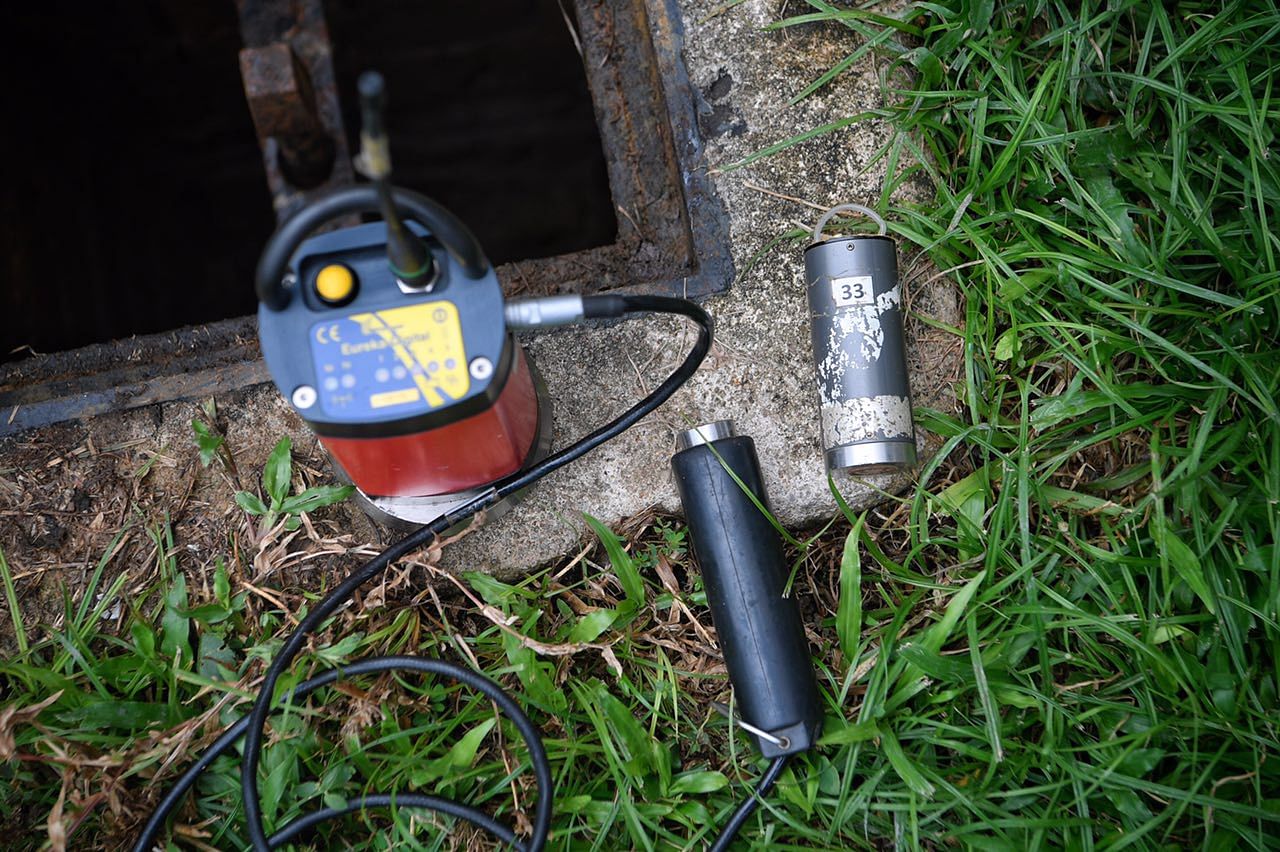Corrosion found in pipes where Bukit Batok leaks occurred; PUB checking all water pipes in estate
Sign up now: Get ST's newsletters delivered to your inbox
Lin Yangchen
Follow topic:
SINGAPORE - The two water pipe leaks at Bukit Batok that happened in the space of a week was due to corroded pipes, going by initial observations, said national water agency PUB on Wednesday (Oct 4).
Investigations into the incidents, including the cause of the corrosion, are still being carried out.
Mr Michael Toh, director of PUB's Water Supply (Network) Department, told reporters during a site visit to Bukit Batok that the agency is now conducting a check on all 100km of water pipes in the estate.
This comes even as the agency is renewing old water pipes in Singapore and speeding up this process.
Bukit Batok has been identified as a "hot spot" after two water pipes in the estate burst on Sept 26 and Oct 1 in separate locations, with water spouts rising several storeys high, causing localised flooding.
The one that burst on Sept 26 at the junction of Bukit Batok West Avenues 6 and 8 was a 700mm-diameter high-pressure steel pipe of 4 to 6 bar that is coated with bitumen on the outside and lined with cement on the inside. It supplies water to the whole of Bukit Batok estate.
The pipe that burst on Oct 1 was a smaller 150mm ductile iron distribution pipe near Blocks 222 and 223, Bukit Batok East Avenue 3.
As part of additional checks that PUB is carrying out in Bukit Batok, PUB engineers are monitoring potable water pipes for leaks in the estate. They attach a device that can detect noise made by water leaking through cracks in the pipe..
Later this week, PUB will also replace 170m of pipeline within the Bukit Batok Street 21 area, which includes Blocks 222 and 223 where the Oct 1 incident occurred. The works are expected to be completed by the end of the year.
Mr Toh said that two additional leaks had occurred in the vicinity of Street 21, one on Oct 1 - the same day as one of the big leaks reported - and another back in 2012.

The monitoring work at Bukit Batok involves two stages.
First, data loggers are temporarily attached to valves overnight, when there is low water consumption, to detect any increased noise levels from water leaking through any cracks in the pipe.
If a leak is detected, devices called correlators are attached to neighbouring valves. The sound from the leak takes a different time to travel to each correlator depending on where the leak is. The location of the leak can be accurately pinpointed by measuring tiny differences in the sound waves between the correlators.
These devices supplement PUB's Smart Water Grid, which comprises more than 320 wireless sensors permanently installed throughout the potable water pipe network.
They monitor both water quality and water flow, and detect sudden sharp drops in water pressure that indicate possible leaks and enable swift response.
PUB said it will roll out the sensors to the Newater pipe network over the next three years.
Mr Toh explained that although the two recent leaks in Bukit Batok were quickly detected by the sensors, water continued spouting for a while because the agency was rerouting water from other pipelines to ensure an uninterrupted supply to customers.
Singapore experiences about six leaks per 100km of pipes a year, down from 95 leaks per 100km a year in 1985.
Some 5 per cent of the water supply is "unaccounted for", lost through events such as leakage, firefighting and maintenance.
This beats many other developed cities: According to a report by the Smart Water Networks Forum, unaccounted-for water in 2011 stood at 25 per cent in Hong Kong and 28 per cent in London, for example.
Nevertheless, Mr Toh said PUB is looking into acoustic technology that would enable the agency to identify pipes with thinning walls that could be on the verge of springing leaks, so as to enable them to "know a leak before it happens".
PUB also has a pipeline renewal programme that began in the 1980s, replacing unlined cast iron pipes laid during colonial times with more robust materials such as cement-lined, polyurethane-coated ductile iron and steel pipes.
In 2016, PUB renewed 20km of pipelines. It said that it would accelerate the programme and aims to renew an additional 125km of its 5,500km of potable water pipes by 2019.
Locations it has identified for pipeline renewal due to ageing or increased incidence of leaks include Serangoon Gardens, Hougang, Clementi, Bedok North and Stirling Road, as well as industrial estates such as Kallang Way, Pioneer Sector, Benoi Sector and Tuas Road.
Despite all efforts, leaks can happen.
Other notable leaks this year include one near the junction of Upper Serangoon Road and Hougang Avenue 3 in March, which flooded part of the road, causing lane closures and buses to skip stops.
In April, pressure from two leaking pipes caused part of the Ayer Rajah Expressway's road surface near Jurong to rise by up to a metre.

